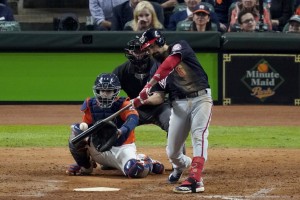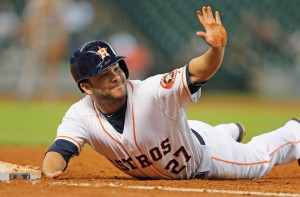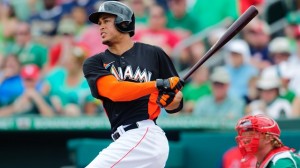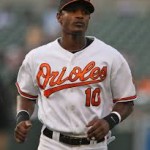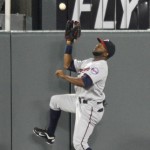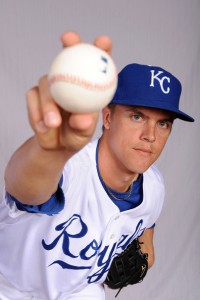With the Marcell Ozuna signing earlier this week, the last qualifying offer-attached player has signed, which means (barring any more stripping of draft picks due to brazen and ridiculous sign stealing by un-penalized players) that we’ve also finalized the 2020 draft order.
This is a two-parter post, closing the books on the 2019 off-season Qualifying Offer accounting, and then a quick look at the 2020 draft.
First up; lets look at players who had QOs and see how they fared.
| Year | Player | Old Team | New Team | Draft Pick Forfeited | Signing Date | Subsequent contract (w/o options) | Money up/down per AAV | Q.O. Screw the player? |
|---|---|---|---|---|---|---|---|---|
| 2019 | Gerrit Cole | Houston | New York Yankees | 2-62, 5-160 | 43810 | 9yr/$324M | 18.2 | No |
| 2019 | Anthony Rendon | Washington | Los Angeles Angels | 2-48 | 43810 | 7yr/$245M | 17.2 | No |
| 2019 | Stephen Strasburg | Washington | Washington | none | 43808 | 7yr/$245M | 17.2 | No |
| 2019 | Zack Wheeler | New York Mets | Philadelphia | 2-53 | 43803 | 5yr/$118M | 5.8 | No |
| 2019 | Madison Bumgarner | San Francisco | Arizona | 2-54 | 43814 | 5yr/$85M | -0.8 | No |
| 2019 | Josh Donaldson | Atlanta | Minnesota | 3-100 | 43845 | 4yr/$92M | 5.2 | No |
| 2019 | Marcel Ozuna | St. Louis | Atlanta | 3-99 | 43851 | 1yr/$18M | 0.2 | Not really |
| 2019 | Jake Odorizzi | Minnesota | Minnesota | none | 43783 | 1yr/$17.8M | 8.3 | No |
| 2019 | Will Smith | San Francisco | Atlanta | 2-67 | 43783 | 3yr/$39M | -4.8 | maybe |
| 2019 | Jose Abreu | Chicago White Sox | Chicago White` | none | 43783 | 1yr/$17.8M | 1.8 | Not really |
Ten players had QOs slapped on them to start the off-season. Seven of those players signed elsewhere, meaning seven players cost their signing teams draft picks. Now, the sting of those draft pick losses isn’t nearly as bad as it used to be: 2nd rounder at best, and we saw some interesting teams signing players this time around.
Meanwhile, for the first time in a while I don’t really think any one player got completely screwed by having a QO associated with his FA status. 8 of the 10 players with QOs improved their contract AAV. Madison Bumgarner accepted a slightly less AAV than the QO figure, but signed for 5 years after a down season, so he can’t be disappointed. Lastly reliever Will Smith may have taken a significantly lower AAV, but as a reliever he’s gotta be happy about guaranteeing 3 years and $39M. Even Ozuna, who signed just a one year deal, didn’t *lose* money and rids himself of the QO for next season, and reportedly turned down more money and multi-year deals.
Compare this to last year, where two marquee FAs (Craig Kimbrel and Dallas Keuchel) both waited til after the draft in mid-June to sign and both took significantly lower money than they were probably due.
In case I havn’t made it sufficiently clear in the past, I think this QO system is ridiculous, and that the MLBPA expended a ton of its political capital in the last couple of negotiating sessions to modify it, yet it still continues to screw over players while enabling the owners to pursue what now acts like a hard salary cap. I think it should be completely abolished. At this point in the game, does it make sense to tie free agency to draft picks? I don’t think so. The Nationals netted a mid-second round extra pick (what ends up being 72nd overall) for losing their marquee hitter in Anthony Rendon in his prime; is this a fair compensation? Of course not. I’m not sure what the right solution is.
So, now that the last QO players has signed, the 2020 draft order is finalized.
Its best seen here at mlb.com: https://www.mlb.com/draft/2020/order , but doesn’t really put in all the details pick by pick.
At the end of the day, 13 Original picks had been lost by teams. Here’s all 14 and why they were lost (the “xth overall” is the original number, assuming no other lost picks)
- 1st round, 30th overall: Forfeited by Houston 1/13/20 for cheating scandal
- 1st round supplemental, 31st overall: was to be compensation for Minnesota for Jake Odorizzi but he took the QO
- 2nd round, 49th overall: lost by Los Angeles Angels for signing Anthony Rendon
- 2nd round, 54th overall: lost by Philadelphia for signing Zach Wheeler
- 2nd round, 57th overall: lost by Arizona for signing Madison Bumgarner
- 2nd round, 64th overall: lost by Atlanta for signing Wil Smith
- 2nd round, 67th overall: lost by New York Yankees for signing Gerrit Cole
- 2nd round, 69th overall: Forfeited by Houston 1/13/20 for cheating scandal
- 2nd round supplemental, 76th overall: was to be compensation for Chicago White Sox for Jose Abreu but he took the QO
- 2nd round supplemental, 82th overall: was to be compensation for Washington for Stephen Strasburg, but he re-signed with the team.
- 3rd round, 109th overall: lost by Atlanta for the Marcell Ozuna signing
- 3rd round, 111th overall: lost by Minnesota for the Josh Donaldson signing
- 5th round, 172nd overall: lost by New York Yankees for signing Gerrit Cole (they lost a 2nd pick b/c they were a luxury tax violator, as the Nats were last year).
At the end of the day, thanks to all these changed/lost picks, the Nats draft slots gain some spots in the later rounds and will look like this; we have four picks in the top 100 this year, which is great.
- 1st round: #22 overall
- 2nd round: #56
- 2nd round supp: #72
- 3rd round: #96
- 4th round: #124
- 5th round: #154
- 6th round: #183
- 7th and on-wards: every 30 afterwards
How does 22nd each round compare as to how the Nats have picked relative to the round over recent years?
- 2019: 16th each round
- 2018: 27th each round
- 2017: 28th each round
- 2016: 18th each round
- 2015: 29th each round
- 2014: 19th each round
- 2013: 30th each round
- 2012: 16th each round
- 2011: 6th reach round
- 2010 and before: usually pretty high each round 🙂
Since the 1st rounder is always the most important pick in a draft, here’s a quick glance at who was drafted with the 22nd overall pick in the first? over the past few drafts:
- 2019: Greg Jones, a SS from UNC-W picked by Tampa. Hit .300 in first pro season in Short-A ball.
- 2018: Ryan Rolinson, a LHP from Ole Miss picked by Colorado. full season starting in the Cal league in 2019 with a 4.87 ERA
- 2017: Logan Warmoth, a SS from UNC picked by Toronto; Promoted to AA mid 2019 season but struggled in Eastern league
- 2016: Will Craig, 3B from Wake Forest picked by Pittsburgh; played all of 2019 in AAA, hit 20+ homers at multiple levels
- 2015: Beau Burrows, prep RHP from Texas HS picked by Detroit: top 100 prospect, pitched in AAA as a 22yr old in 2019
- 2014: Grant Holmes prep RHP from South Carolina HS picked by Los Angeles Dodgers. Some top 100 buzz, pitched most of 2019 in AA as a 23yr old after missing 2018 with injury
- 2013: Hunter Harvey, prep RHP from North Carolina HS picked by Baltimore. Lots of top 100 buzz, missed a year w/ injury, in the mix for MLB spot.
- 2012: Marcus Stroman, RHP from Duke picked by Toronto. 51-47 as a MLB starter, all-star in 2019.
… so there’s some promise of picking in this range.
